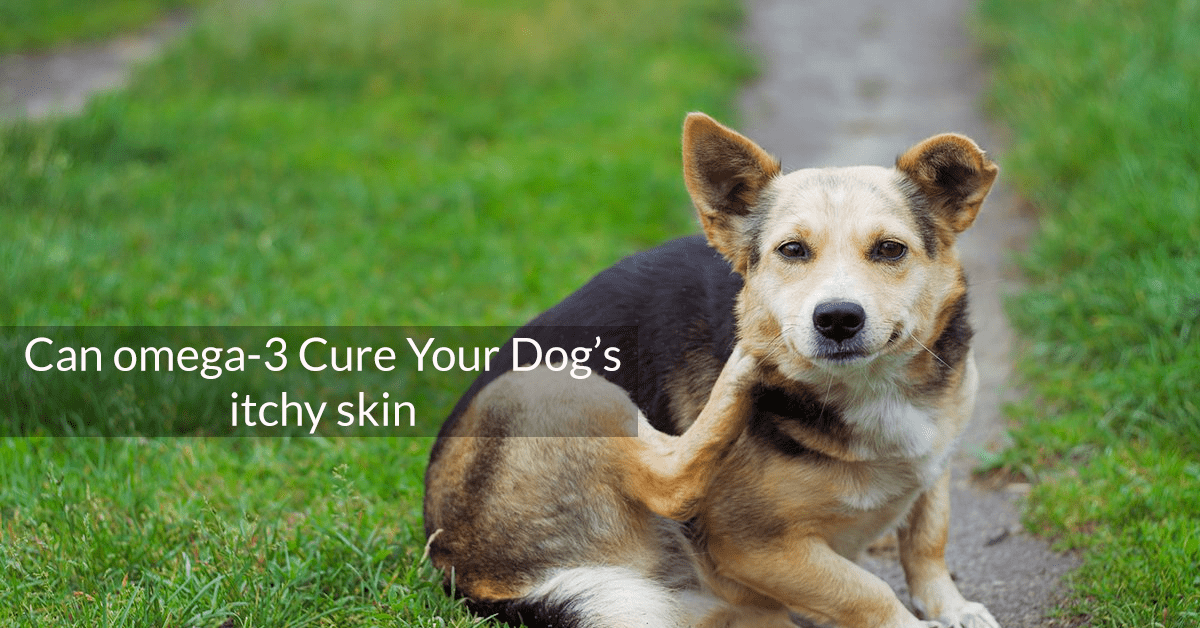Can omega-3 cure your dog’s itchy skin?
Omega-3 fatty acids are your dog’s best friend in the diet. It is irreplaceable, a “wonder nutritional supplement” found in some food varieties in large amounts. Before we jump in to tell you more about it, let us begin by developing a fundamental understanding.
Fatty acids are polyunsaturated fatty acids (PUFA) known to be the good fat in the diet. There are two varieties of it prominently depending on the source from which they are obtained.
- The plant sources contain omega-3 fatty acid alpha-linolenic acid (ALA).
- In cold water fishes, EPA (Eicosapentaenoic acid) and DHA (Docosahexaenoic acid) are found heavily.
Though their body can produce some kinds of fatty acids, yet some need to be regularly supplemented externally. These are known to be essential fatty acids (EFA). Omega 3- fatty acids are a type of essential fatty acids that must be taken externally regularly.
All these three fatty acids are essential for your dog and are required daily in the diet. My Furries team is trying to create awareness in pet parents about how they can keep their dogs happy and healthy. As you know what Omega-3 acids are, we will understand more about their sources and how they can benefit your dog’s itchy skin.
Good sources of omega 3-fatty acids are found in…
- Fishes like mackerel, caviar, herring, oysters, sardines, anchovies and salmon, also Cod liver are rich sources of omega-3 fatty acids.
- Some types of algal oil
- Plant sources like phytoplankton come in powder form, and you can incorporate the same in the food.
- Krill oil is also an important source and can be included in the diet.
- You could add the fish, or you could also incorporate fish oil capsules into the diet.
How much omega-3 fatty acid does your dog need?
Further, the publication put forth by the National Research Council in the nutrition needs of dogs and cats indicates a safe upper and lower limit of EPA and DHA. According to it, for a 5-pound dog, the need is 684 mg of omega-3 fatty acids. This particular dose is enough for helping your dog’s fur growth and good health of the skin.
Remember, excessive use of omega 3-fatty acids can also cause undesirable side effects. Thus, consult a vet before inducing your pet with omega 3-fatty acids.
How does omega 3-fatty acids benefit your dog’s hide?
Omega 3-fatty acids are a lifesaver for your dog’s fur. Don’t believe it? Want to know how?
Well, here it is,
- Omega 3-fatty acids can help reduce inflammations, including the ones arising from flea bites, food, and inhalational or contact dermatitis.
- It can lessen the problem of dry skin, dander and prevent dandruff growth in many skin disorders.
- Omega 3-fatty acids can help reduce the level of cortisone, and antibiotics used in managing many types of conditions in your pet.
- It improves and strengthens the body’s immune system, thereby substantially reducing inflammation in your dog.
- Omega 3-fatty acids also help in the effective management of autoimmune diseases (if any that your dog suffers from,) which in return also tempers down the inflammation of their skin.
- The omega-3 fatty acid effectively increases blood circulation to the skin and thus boosts healthy skin.
- Several studies, including the one conducted by CE Lenox and JE Bauer in 2013, show significant improvement in dogs’ fur condition, fed regularly with omega 3-fatty acid.
To end it, we here at My Furries.com, make every effort to make the canine bearers well informed about their pets. A simple change in the diet can heal many things and prevent many unnecessary changes from appearing in your pet, why not try it?
Subscribe to My Furries for more healthy diets for your dog.



